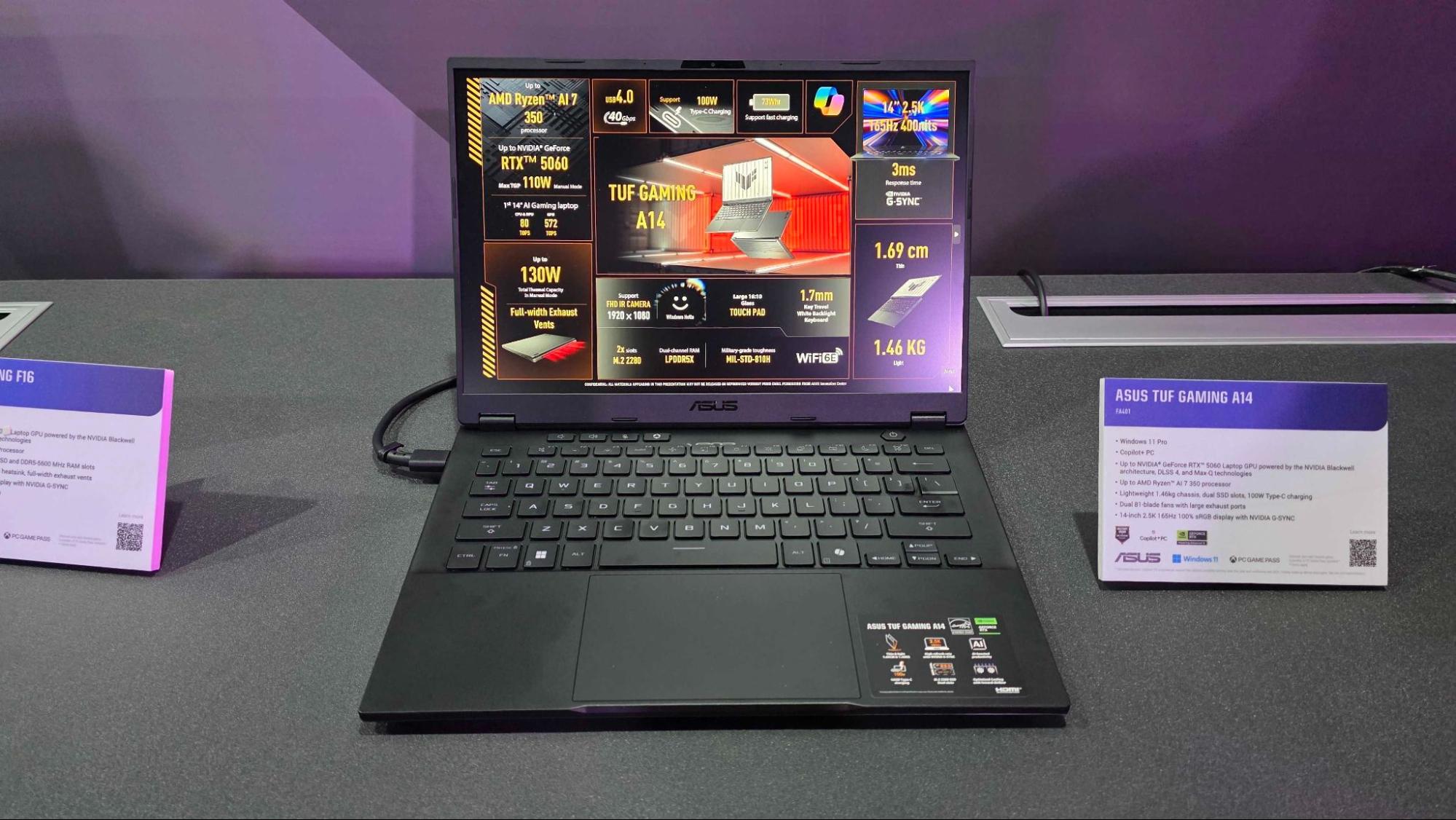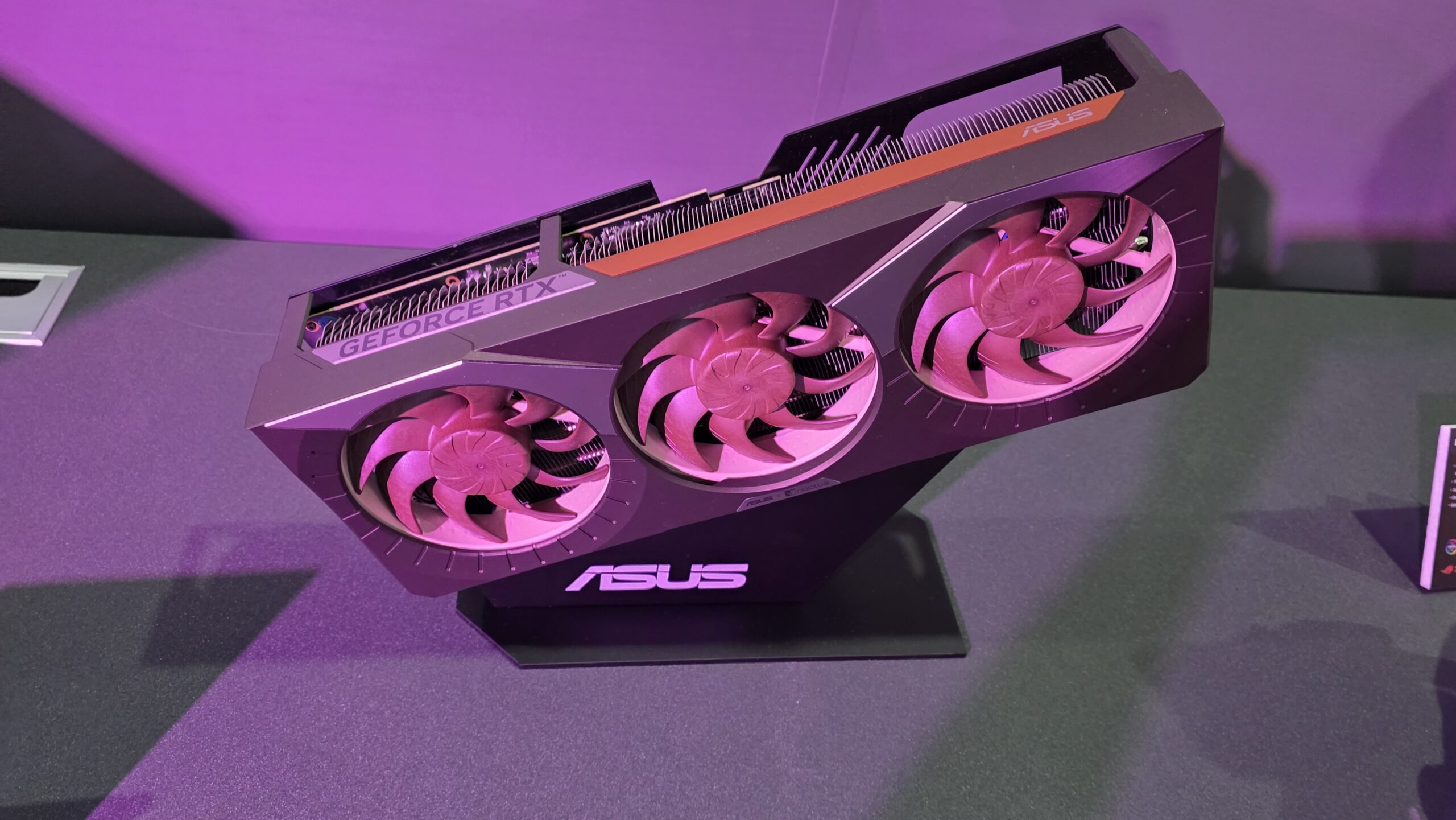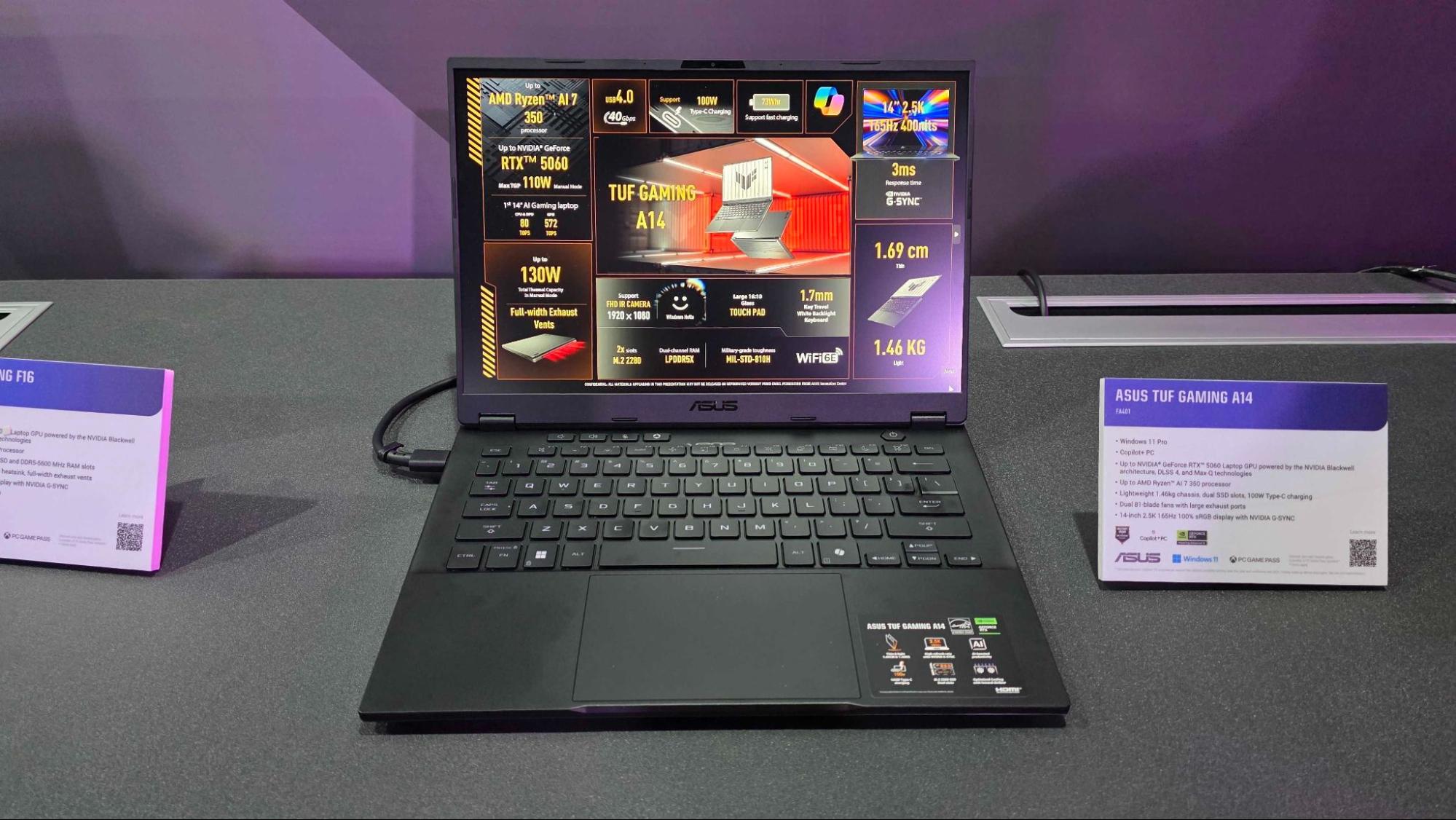## Prepare to Unleash: Asus Packs RTX 5060 Power and Chilling TUF Upgrades
Hold onto your controllers, gamers! Asus just dropped some serious hardware heat, and it’s going to change the landscape of budget-friendly gaming. Say hello to the RTX 5060, now gracing the sleek chassis of Asus’ gaming laptops, promising a smoother, more immersive experience without breaking the bank. But that’s not all – Asus is also giving its legendary TUF A14 a serious makeover, cranking up the cooling power to keep your gameplay running cool and collected, even during the most intense battles.

Display Differences
When it comes to the ROG Strix G16, Asus is offering a range of display options for both its Intel and AMD configurations. This strategic approach allows gamers to tailor their experience based on their priorities and budget. Notably, the refresh rates and Wi-Fi standards differ between the two versions.

The Intel-powered Strix G16 boasts a 1920 x 1200 display with a 144Hz refresh rate, prioritizing a high frame rate for a smoother gaming experience. However, it utilizes Wi-Fi 7, the latest standard, ensuring lightning-fast connectivity for online gaming and content streaming. On the other hand, the AMD-powered Strix G16 comes equipped with a 1920 x 1200 display with a 165Hz refresh rate, offering a slightly higher refresh rate for even smoother visuals. However, it utilizes Wi-Fi 6E, which while still high-performing, lacks the latest advancements of Wi-Fi 7.

These subtle differences in display specifications directly impact the overall gaming experience. The higher refresh rate of the AMD model can translate to a more responsive and fluid gameplay, particularly in fast-paced titles. Conversely, the Wi-Fi 7 on the Intel model promises superior bandwidth for lag-free online gaming and smoother streaming experiences.

Value Proposition
The availability of two distinct configurations for the ROG Strix G16 presents a dilemma for potential buyers, as each version offers a unique set of features and price points. Analyzing the pricing and features of each version is crucial to determining which offers the best value proposition.

The Intel-powered Strix G16, priced at $1,499.99, comes with a 144Hz refresh rate and Wi-Fi 7. This configuration prioritizes smooth gameplay and fast connectivity, potentially appealing to gamers who value a high frame rate and prioritize online gaming experiences.

In contrast, the AMD-powered Strix G16, priced at $1,599.99, boasts a 165Hz refresh rate and Wi-Fi 6E. While it falls slightly behind in connectivity, its higher refresh rate offers a more visually fluid experience, potentially attracting gamers who prioritize smooth visuals in demanding titles.
Ultimately, the best value proposition depends on individual gamer preferences and priorities. Those seeking the latest connectivity technology and a high frame rate might find the Intel model more appealing. Conversely, gamers prioritizing the smoothest visuals and a slightly higher refresh rate may opt for the AMD version.
TGP Limitations
The Zephyrus G14, known for its portability and balanced performance, welcomes the RTX 5060 with a caveat: its Total Graphics Power (TGP) is limited to 110W. This restriction, while keeping the laptop slim and lightweight, potentially impacts the RTX 5060’s performance ceiling compared to configurations with higher TGPs.
To understand the implications, consider that the RTX 5060’s performance can scale with increased TGP. Laptops with higher TGPs can allocate more power to the GPU, enabling higher clock speeds and potentially greater frame rates in demanding games. The Zephyrus G14’s limited TGP may result in slightly lower performance compared to other laptops with the RTX 5060.
However, it’s crucial to note that the Zephyrus G14’s focus on portability and efficiency means that its thermal design and battery life may be optimized for sustained performance within its TGP constraints. For gamers prioritizing mobility and balanced performance, the RTX 5060 in the Zephyrus G14 still offers a compelling option.
Ryzen 9 8945HS and 5080
Alongside the new RTX 5060 configuration, Asus retains the existing Zephyrus G14 model featuring a Ryzen 9 8945HS CPU and an RTX 5060 GPU. This decision reflects Asus’s strategy of catering to a broader range of user needs and budgets.
Gamers who prioritize performance may opt for the Ryzen 9 8945HS and RTX 5080 configuration, as the more powerful CPU and GPU combination offers a significant performance boost. However, this configuration comes at a higher price point.
The retention of the Ryzen 9 8945HS and RTX 5060 configuration provides a more accessible entry point for gamers seeking a capable balance of performance and portability. While not as powerful as the 5080 configuration, the 5060 still delivers solid performance for many popular games.
Targeting the Enthusiast
The Zephyrus G14 continues to resonate with gamers who demand a blend of portability and performance. Its compact design, long battery life, and powerful hardware make it a compelling choice for enthusiasts who value mobility without compromising on gaming capabilities.
The addition of the RTX 5060 strengthens the Zephyrus G14’s position in this segment. The RTX 5060’s improved performance over its predecessor, coupled with the laptop’s efficient thermal design and long battery life, makes it a formidable contender for gamers who prioritize both performance and portability.
However, the Zephyrus G14 faces stiff competition from other ultra-thin gaming laptops. The market is increasingly crowded with laptops boasting powerful hardware and sleek designs. Asus will need to continue innovating and refining its offerings to maintain its competitive edge in this demanding segment.
Zephyrus G14: 5060 and Beyond
ROG Bulwark Dock: Expanding the ROG Ally Ecosystem
The ROG Bulwark dock emerges as a strategic addition to the ROG Ally ecosystem, offering a versatile connectivity solution for gamers seeking to enhance their handheld gaming experience. The dock’s numerous ports and ergonomic design cater to a variety of needs, effectively transforming the ROG Ally into a more comprehensive gaming setup.
Versatile Connectivity
The ROG Bulwark dock is equipped with an impressive array of ports, including HDMI 2.1, Ethernet, multiple USB 3.2 Gen 2 Type-A ports, and two USB 3.2 Gen 2 Type-C ports. This extensive connectivity suite allows gamers to connect a wide range of peripherals, such as monitors, keyboards, mice, and external storage devices. The inclusion of HDMI 2.1 enables high-resolution gaming at up to 4K resolution with a 144Hz refresh rate, providing a truly immersive visual experience.
Ergonomic Design
The ROG Bulwark dock features an adjustable stand that allows users to position the ROG Ally or other handheld devices at various angles. This ergonomic design enhances comfort and viewing experience, especially during extended gaming sessions. The stand’s adjustability caters to individual preferences and gaming setups.
Expanding the Ally’s Reach
While designed specifically for the ROG Ally, the ROG Bulwark dock’s versatility suggests potential applications for other handheld devices, laptops, and even smartphones. The dock’s wide range of ports and ergonomic design could benefit a broader range of users seeking to expand their connectivity options and enhance their mobile computing experience.
The ROG Bulwark dock represents a strategic move by Asus to expand the utility and appeal of its ROG Ally handheld. By providing gamers with a comprehensive connectivity solution and an ergonomic design, Asus aims to elevate the handheld gaming experience and solidify its position in the competitive portable gaming market.
Conclusion
So, there you have it. Asus is swinging for the fences with its latest gaming laptop updates, injecting the RTX 5060 into its lineup and giving the TUF A14 a serious cooling upgrade. This move speaks volumes about Asus’s commitment to delivering powerful, performance-driven machines at accessible price points. The RTX 5060, while not a top-tier card, offers a sweet spot for gamers seeking a significant jump in graphics performance without breaking the bank. Paired with the enhanced cooling in the TUF A14, this combination promises a smooth, stable gaming experience even during intense sessions. But what does this mean for the future of gaming laptops? It’s clear that the trend towards more accessible, high-performance hardware is accelerating. Will this lead to even more competitive pricing and innovative features? Will we see a wider adoption of RTX 50-series GPUs across different laptop tiers? Only time will tell, but one thing is certain: this is a thrilling time to be a PC gamer, and Asus is leading the charge with its bold moves. The future of gaming is bright, and it’s landing right on your lap.
